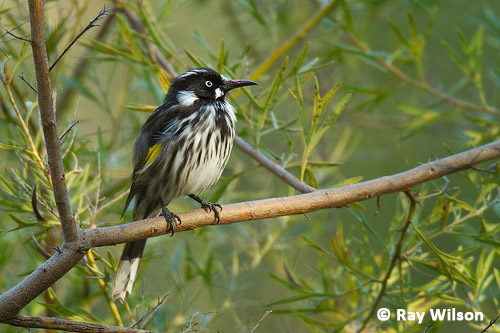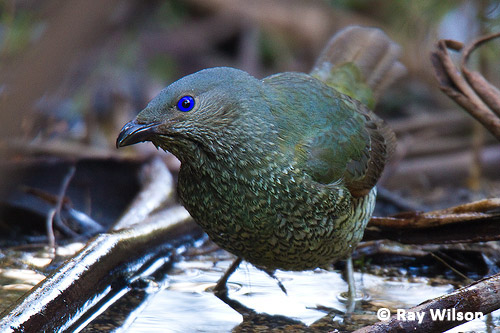
- Home
- Workshops / Tours
- Diary / Blog
- Galleries
- Foreign Trips
- Tasmania 2016
- NE Queensland 2016
- Western Alps 2016
- NE Spain 2016
- Australia's Wet Tropics 2015
- Australia's Top End 2015
- SW Australia 2015
- Switzerland 2015
- Andalucia 2015
- Belize 2015
- Australia 2014
- Switzerland 2014
- Belize 2014
- Bahama Islands 2014
- Switzerland 2013
- Ecuador 2012-2013
- Florida 2011-2012
- Vancouver Island 2011
- Australia 2010
- Peru 2008
- Bulgaria 2007
- Lesvos 2006
- California 2006
- New Zealand 2005
- Extremadura 2005
- Goa, India 2004
- The Gambia 2003
South-eastern Australia
25th September - 17th October 2010
Australian National Botanic Gardens, Canberra
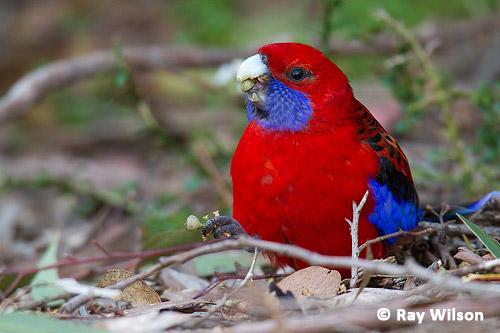
Crimson Rosella (Platycercus elegans)
The Australian National Botanic Gardens lie just to the north of Canberra city centre and, being only a very short drive from my friend's house in Lyneham, was an ideal place to begin to familiarise myself with Australia's abundant wildlife.
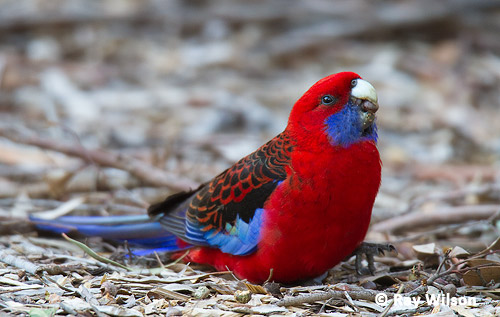
Crimson Rosella (Platycercus elegans)
From a European perspective, one thing that immediately strikes you on your first arrival in Australia is the abundance of spectacularly beautiful parrots, such as the Crimson Rosella. This is a very common species in Canberra.
Spotted Pardalote (Pardalotus punctatus)
Many of the birds found in Australia belong to families that are found nowhere else in the world. One such endemic family is the Pardalotes. At only 8cm long, the Spotted Pardalote (above) is one of Australia's smallest birds.
New Holland Honeyeater (Phylidonyris novaehollandiae)
The family which contains the largest number of species in Australia is the honeyeaters with 69 species represented nationwide. As their name suggests, most of these species feed almost entirely on the nectar produced by flowering trees and shrubs.
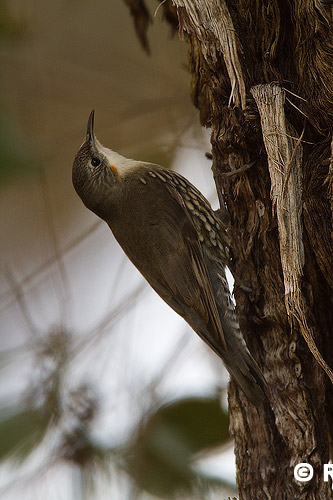
White-throated Treecreeper (Cormobates leucophaeus) |
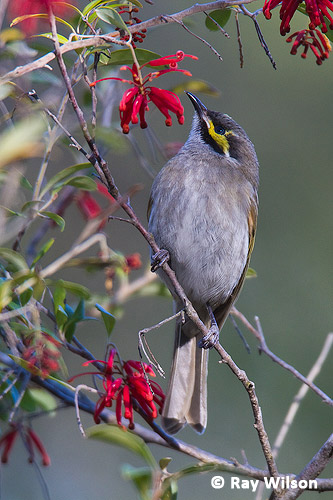
Yellow-faced Honeyeater (Lichenostomus chrysops) |
A Satin Bowerbird (below) was bathing in a small creek under overhanging foliage that was so dense that the bird looked like little more than a black sillouette to the naked eye. To get the photo I had to wait for the rare moments when it held its head perfectly still due to having to use a very low shutter speed (1/10th second) at ISO1600. Even the slightest movement of the bird would have caused a blurred image at such a low shutter speed, no matter how good your long-lens technique is!
female Satin Bowerbird (Ptilonorhynchus violaceus)
If you ever visit Australia and use the Simpson and Day Field Guide to the Birds of Australia, you may notice a glaring error in the illustration of the female Satin Bowerbird. Instead of having the beautiful ultramarine blue eyes which are their most striking feature, the illustration has rather dull brown eyes. The edition that I have was printed in 1998, so hopefully they have corrected this in more modern versions.
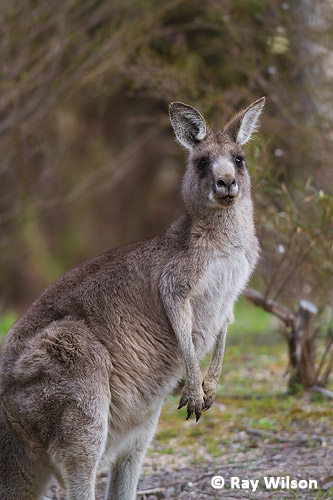
Adult female |

Joey |
Eastern Grey Kangaroo (Macropus giganteus)
Eastern Grey Kangaroos are incredibly common in, and around, Canberra. Being heavy grazers, they are not particularly welcome in the Botanic Gardens due to the damage they do the plants that the staff take so much care trying to cultivate.
Ray Wilson owns the copyright of all images on this site.
They may not be used or copied in any form without prior written permission.
raywilsonphotography@googlemail.com

